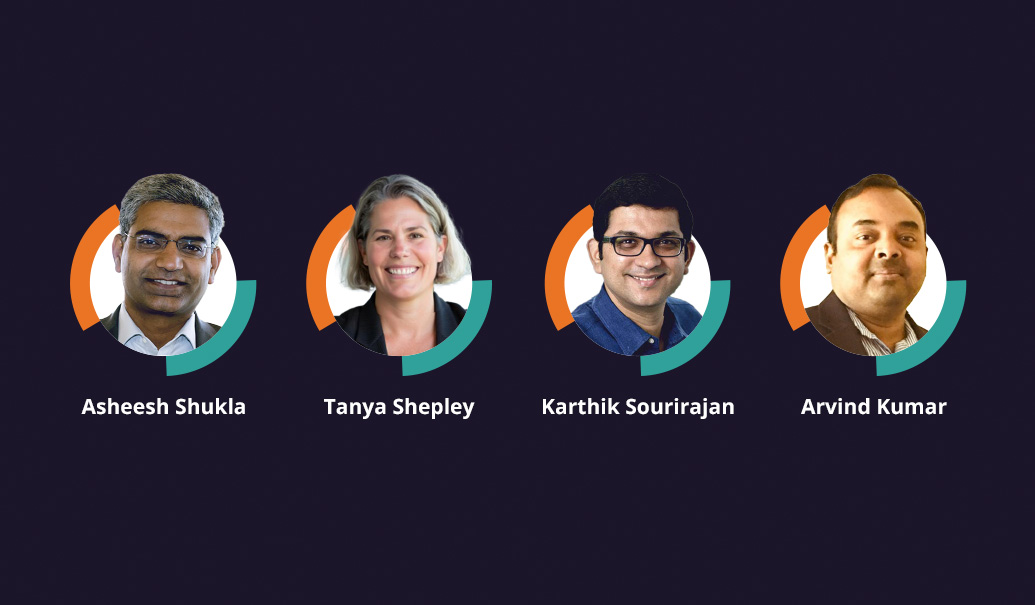Key account management (KAM) plays a vital role in the pharma commercial model, but its success depends on the right strategy, data and technology. Regeneron took a holistic approach to building its KAM program, integrating these elements to create a more proactive, data-driven model. This not only enhances customer engagement but also drives better business outcomes.
In this Q&A, we talk with Jacky Space, director of strategic customer engagements at Regeneron, about how they used technology to enable and scale their KAM program.
ZS: Can you share some background on your goals for the KAM team and what you needed to enable success?
Jacky Space: Our vision for the KAM program centered on developing an integrated, multifunctional approach to customer engagement that created tangible business impact. While we had developed a sophisticated operational framework, we recognized two crucial requirements: establishing clear performance metrics and providing our KAMs with the right tools to develop and implement effective engagement strategies.
A significant challenge we faced was the fragmentation of our data across various PowerPoint presentations and Excel files, which limited our ability to scale and act on insights efficiently. We realized that advancing our strategic initiatives required a robust technological infrastructure that would support strategic planning, enable data-informed decisions and facilitate effective team collaboration.
ZS: What were some of the critical steps in implementing this transformation?
JS: Rather than approaching this as a series of disconnected projects, we took a step back and looked at the big picture. We focused on building a program that integrated customer engagement, account management and data collection into a cohesive strategy. We asked ourselves: What do we need to enable customer engagement as a holistic journey? That mindset helped us ensure that our technology and data investments weren’t just solving immediate needs but contributing to long-term, scalable outcomes.
ZS: How did you align technology with customer engagement processes?
JS: We approached technology integration strategically by first establishing our customer engagement framework. Rather than letting software drive our processes, we carefully selected tools that enhanced our existing KAM approach. Our technology decisions were purposefully aligned with core objectives: engaging key stakeholders to understand their priorities at the account, monitoring engagement across stakeholder networks and developing actionable business insights.
A critical success factor was our integrated approach to technology implementation. We moved away from isolated solutions and instead focused on technologies that seamlessly connected with our broader KAM infrastructure. This required extensive collaboration across departments and ensuring that our systems delivered meaningful, practical value to our teams.
ZS: What core capabilities did you focus on building for your KAM program?
JS: One of the first things we did was move away from static spreadsheets and PowerPoint decks to digitize our account plans. We needed a platform where teams could collaborate in real time, execute plans more effectively and use technology to enhance decision-making. By making this shift, we created a structured, trackable system that preserved institutional knowledge and provided a foundation for future innovations, including AI-driven insights.
We introduced Valkre, a tool that allowed us to standardize account planning and streamline key processes. The platform gave us flexibility—account plans could be customized based on need, shared across teams and extracted into a scorecard. For the first time, we had a unified view of account plans, programs and managers, giving us a complete picture of performance. With this visibility, we could measure both short-term and long-term outcomes while evaluating how our account teams were driving impact.
Beyond technology, we also redefined how we measure KAM success. Traditional sales metrics—like reach and call frequency—aren’t suited to represent the impact of strategic account management. Instead, we developed balanced scorecards that aligned to our strategic imperatives.
ZS: How did evolving your data strategy strengthen the KAM program?
JS: Having the right tools isn’t enough—you need the right data. Without it, even the best technology won’t give you a clear picture of your customers. And account data is incredibly complex. We needed to build a more holistic data strategy that gave KAM teams a complete view of their customers.
This meant understanding not just basic customer hierarchies but also the full ecosystem of stakeholders, including group purchasing organizations, accountable care organizations, distributors and payers. We also had to integrate multiple data sources—third-party data, field-generated insights, internal contract tracking and distribution data—to ensure that we were capturing the full picture.
By evolving our data strategy, we created a more multidimensional view of our customers, aligned with business and therapy area objectives. This allowed our teams to engage in a much more informed and strategic way.
ZS: What new capabilities does Regeneron have now that weren’t possible before?
JS: Before, fragmented systems and inconsistent data made it difficult to track the impact of our KAM strategies. Now, with a more cohesive system, we can measure and report on our activities more effectively and provide actionable insights at the right levels within the organization.
This has completely changed the way we operate. We can now leverage data to make smarter, more strategic decisions. With a real-time, holistic view of customer engagement, we can anticipate customer needs, align our resources more effectively and optimize our engagement strategies.
Beyond that, we’ve also improved cross-functional collaboration. Because we now have a unified system that aligns account plans, customer insights and key metrics, marketing, sales and customer support teams are working together more seamlessly. This has not only made our teams more efficient but has also improved the overall customer experience.
ZS: What advice would you give to organizations embarking on a KAM transformation?
JS: The first step is making sure that your organization truly prioritizes an account-based strategy. Bringing KAM leadership, IT, advanced analytics, data management, marketing and others into the conversation early is crucial—help them understand your vision and how you’ll measure success.
Next, ensure that the roles, responsibilities and capabilities of your KAMs align with your business objectives. This alignment should also extend to your key performance indicators. Defining the right metrics not only helps with resource allocation but also ensures that you’re measuring the right outcomes. And as your strategy evolves, so should your metrics.
“If your data isn’t strong, your metrics won’t be either.”
Jacky Space, Regeneron
Finally, start with the foundational systems before scaling up. Many of these elements are interconnected—if your data isn’t strong, your metrics won’t be either. Taking the time to build a structured, programmatic approach will set you up for long-term success.
KAMs need a holistic view of the customer. And if you don’t have the right data, you might have the best tools in the world, but you’re not going to see the right picture. And account data is highly complicated. So we needed to evolve our data strategy to create holistic account views for KAM teams.
All of these should be factored into a comprehensive, multidimensional view of customers that is aligned with business and therapy area objectives.
ZS: What kind of results has Regeneron seen from enhanced KAM strategy and technological enablement?
JS: We’ve been able to leverage data to make more informed, strategic decisions. With a holistic view of the customer and more accurate metrics, we can better anticipate customer needs, align resources effectively and optimize engagement strategies.
By digitalizing account plans and aligning tools with strategy, we’ve boosted cross-functional collaboration. Because we now have visibility into what we’re doing and have clear objectives as well as a sophisticated way to communicate and socialize what the program is doing with each individual, we’re able to drive efficiency with more productive business reviews.
ZS: What advice would you give to someone embarking on a KAM journey like this?
JS: Embedding a KAM team within an organization is a big step, so it’s extremely important to first make sure your whole organization views account-focused strategy as a priority. Get IT, legal, marketing, leadership, advanced analytics and compliance involved early. Trust me, bringing them in from the beginning helps them truly understand your vision and how you plan to measure success.
Next, ensure that the defined roles and responsibilities and the capabilities of the KAMs match your objectives. Align those to your KPIs, because that also ultimately helps with resource optimization. And you can evolve the metrics as the strategy evolves.
Finally, it’s critical to set up the foundational systems first and then go on from there, because many of these things are interconnected. If your data is not great, your metrics are probably not going to be the best. So take a step back, build a strategy and establish a programmatic approach before scaling and implementing new capabilities.
Add insights to your inbox
We’ll send you content you’ll want to read – and put to use.















